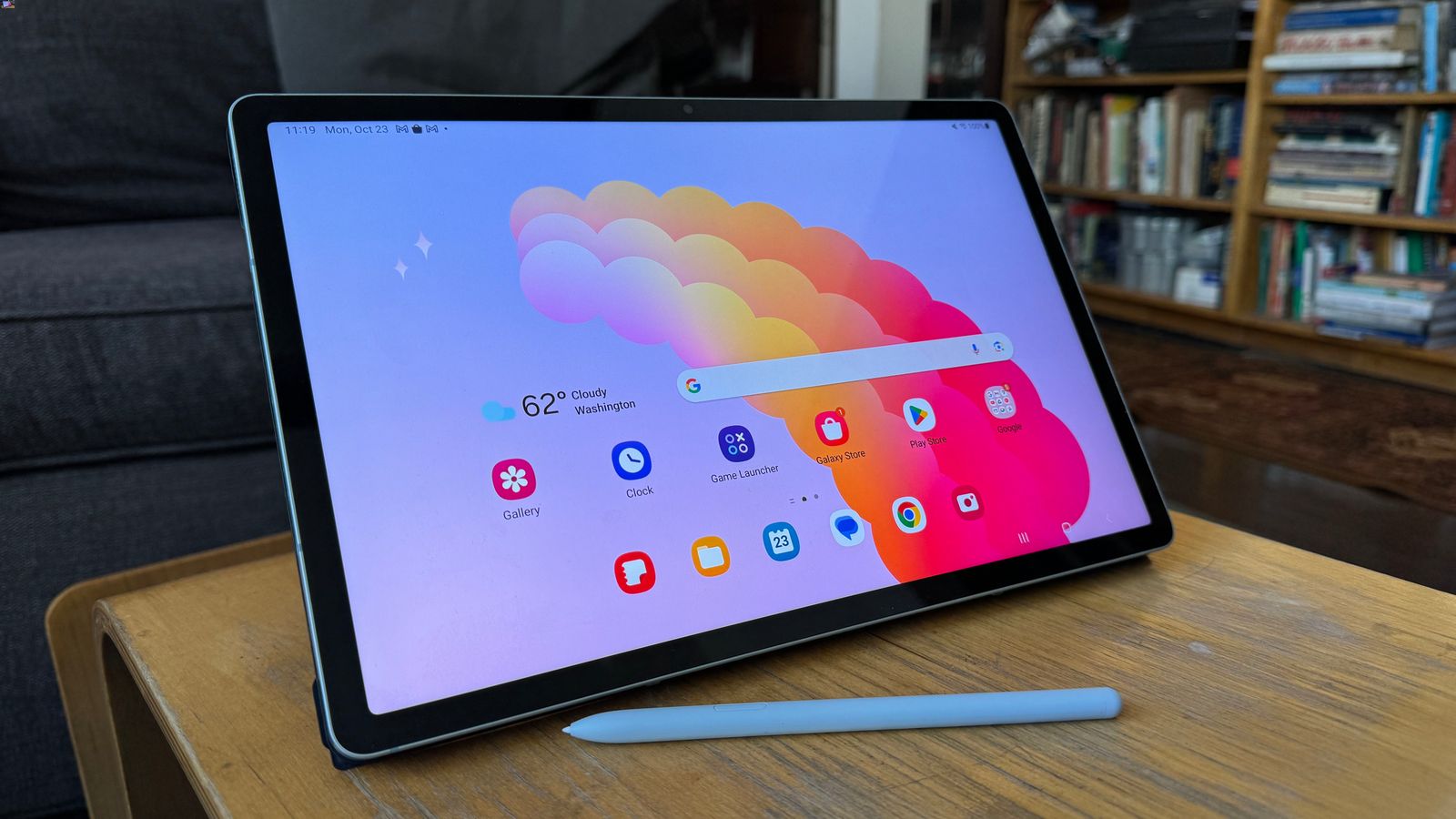
The Need for a Large Screen
Understanding why a larger screen is often preferred helps in appreciating the benefits:
- Immersive Experience: Bigger displays offer a more engaging viewing experience for movies, games, and books.
- Productivity: Professionals find larger screens beneficial for multitasking and as potential laptop replacements.
- Creativity: Artists and designers enjoy the extra space for detailed work and precision.
Top Contenders: The Largest Android Tablets
Samsung Galaxy Tab S9 Ultra
Currently, the largest Android tablet available, the Samsung Galaxy Tab S9 Ultra, boasts a 14.6-inch Dynamic AMOLED 2X display.
Key Features:
- Display: 14.6-inch Dynamic AMOLED 2X with a 120Hz refresh rate for smooth visuals.
- Processor: Snapdragon 8 Gen 2 for Galaxy chip ensures high performance.
- S Pen: Included S Pen offers a pen-on-paper feel for artists and note-takers.
- Battery Life: Impressive battery life, lasting up to 24 hours on a single charge.
Samsung Galaxy Tab S8 Ultra
Another strong contender, the Samsung Galaxy Tab S8 Ultra, features a 14.1-inch Super AMOLED display.
Key Features:
- Display: 14.1-inch Super AMOLED with a resolution of 2960×1848 pixels and a 16:10 aspect ratio.
- Processor: High-performance processor for smooth operation.
- Build Quality: Premium build with slim, uniform bezels.
Lenovo Tab Extreme
The Lenovo Tab Extreme offers a 14.5-inch 3K OLED display, designed for an excellent viewing experience.
Key Features:
- Display: 14.5-inch 3K OLED with vibrant colors and high contrast.
- Processor: MediaTek Dimensity 9000 chip for robust performance.
- Dual-Mode Stand: Versatile dual-mode stand for various usage scenarios.
Other Notable Mentions
Samsung Galaxy Tab A9+
For those seeking a large screen without a hefty price tag, the Samsung Galaxy Tab A9+ offers an 11-inch display.
Key Features:
- Display: 11-inch screen ideal for movies, books, and games.
- Performance: Mid-range processor for smooth everyday tasks.
- Battery Life: Lasts up to 12 hours on a single charge.
Apple iPad Pro (2024)
Though not an Android tablet, the Apple iPad Pro (2024) deserves mention for its impressive display and powerful Apple M4 chip.
Key Features:
- Display: 13-inch Ultra Retina XDR OLED with vibrant colors and high contrast.
- Processor: Apple M4 chip for exceptional performance, suitable for demanding tasks.
Choosing the Right Tablet
When selecting a large-screen Android tablet, consider several factors:
Portability
While large, some tablets are lighter and more portable. The Samsung Galaxy Tab S9 Ultra has a durable metallic body but limited portability. The Lenovo Tab Extreme, slightly smaller, still offers an impressive display.
Performance
Processor and RAM significantly impact performance. The Samsung Galaxy Tab S9 Ultra, powered by the Snapdragon 8 Gen 2 for Galaxy chip, excels in multitasking and demanding tasks.
Features
Look for high refresh rate displays, powerful speakers, and stylus support. The Samsung Galaxy Tab S9 Ultra includes an S Pen for drawing and writing with a pen-on-paper feel.
Price
Large tablets often come with premium price tags. The Samsung Galaxy Tab S9 Ultra starts at $1,200, while the Lenovo Tab Extreme starts at $1,199. The Apple iPad Pro (2024) starts at $1,299, offering exceptional performance and display quality.
Final Thoughts
Selecting the largest Android tablet involves considering specific requirements and budget. The Samsung Galaxy Tab S9 Ultra stands out with its 14.6-inch Dynamic AMOLED 2X display, powerful processor, and impressive battery life. Other options like the Lenovo Tab Extreme and Apple iPad Pro (2024) also offer compelling features depending on individual needs. Whether for work, gaming, or entertainment, a large-screen Android tablet can meet diverse needs.
